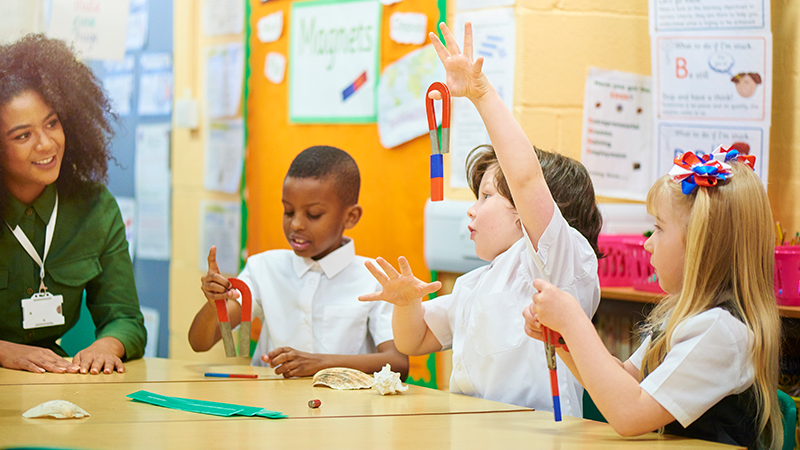In my first year of teaching, I followed our school-wide adopted strategy of writing names on the board and adding checkmarks in response to bad behavior. When that didn’t work, I tried the red, yellow, and green light strategy. After a year of that, I decided the traffic light was too negative, so I changed to ice cream cone scoops. All students started with three scoops and would lose scoops with each bad behavior and earn their scoops back with good behaviors. Unfortunately, this only worked for a few students. So, why did all these methods fail?
Punitive reinforcement systems do not change behavior. Only positive reinforcement of desired behavior will change students’ behavior over time.
Over the years, I’ve worked with kids with great behavior, kids with learning differences, and kids with extreme emotional and behavioral issues, and I’ve seen the strengths of positive reinforcement proven over and over again. So, no matter what student population you might be working with right now, here are three positive reinforcement strategies that will truly help you bring about the change you want to see in your classroom.
Clear and Consistent Expectations
Perhaps the most important part of positive reinforcement is to be clear about your expectations and be consistent in reinforcing them. Or as I like to say: Explain, model, and repeat.
- Explain: You can’t assume your elementary students know what you mean if you say, “Line up quietly.” Instead, be explicit. For example, “Line up quietly means walk with your hands at your side and no talking.”
- Model: Practice the behavior you want to see and consistently repeat instructions each time the situation arises. For older students, “Put cell phones away” should instead be, “Turn off your cell phones and place them face down in your purses, backpacks, or pockets.”
- Repeat: Consistently repeat your instructions for every class, every day until the behavior becomes habit.
Positive Reinforcements and Rewards
Punishment may stop behavior temporarily but not in the long term. Instead, use positive reinforcement to encourage, acknowledge, and support expected behavior. When you verbally acknowledge the behavior, make sure to label it and thank the student. For example, “Thank you for turning off your phones and laying them facedown as you put them away.”
For many students, verbal reinforcement may not be enough. They will need tangible, concrete reinforcers. Reinforcers can come in the form of tokens used to purchase perks or treats, or they could be extra free time or recess. I know many will say that intrinsic motivation should be reward enough, but especially with young children, rewards can go a long way in positive behavior modification.
When you give tangible rewards, though, it is critical you do not take them away once students earn them. Doing so will often escalate bad behavior. Once students earn a reward, they get to keep it. Instead, use accountability for bad behaviors.
Accountability and Logical Consequences
Emphasizing positive reinforcement does not mean you shouldn’t hold students accountable for their behavior. Accountability is an important part of positive reinforcement and should include logical positive and negative consequences. Logical consequences should not be confused with punishment, however. Punishment is intended to hurt; logical consequences are intended to dissuade future behaviors.
Logical consequences should match the context of the behavior. If a student writes on the walls in the bathroom, then a logical consequence would be to clean the walls and apologize to the custodial staff. If a student has a cell phone out in class, then the logical consequence is to take it away or require the student to leave it on your desk upon entering the classroom.
Changing Your Approach
Using clip and color systems for behavior management not only encourages negative reinforcement, but it can be publicly humiliating to our most vulnerable students. Instead, find ways to positively reinforce your students as often as possible. Hold students accountable when necessary and use their behavior as an opportunity to teach expectations, and you’ll soon see your classroom become more calm, respectful, and open to learning.






